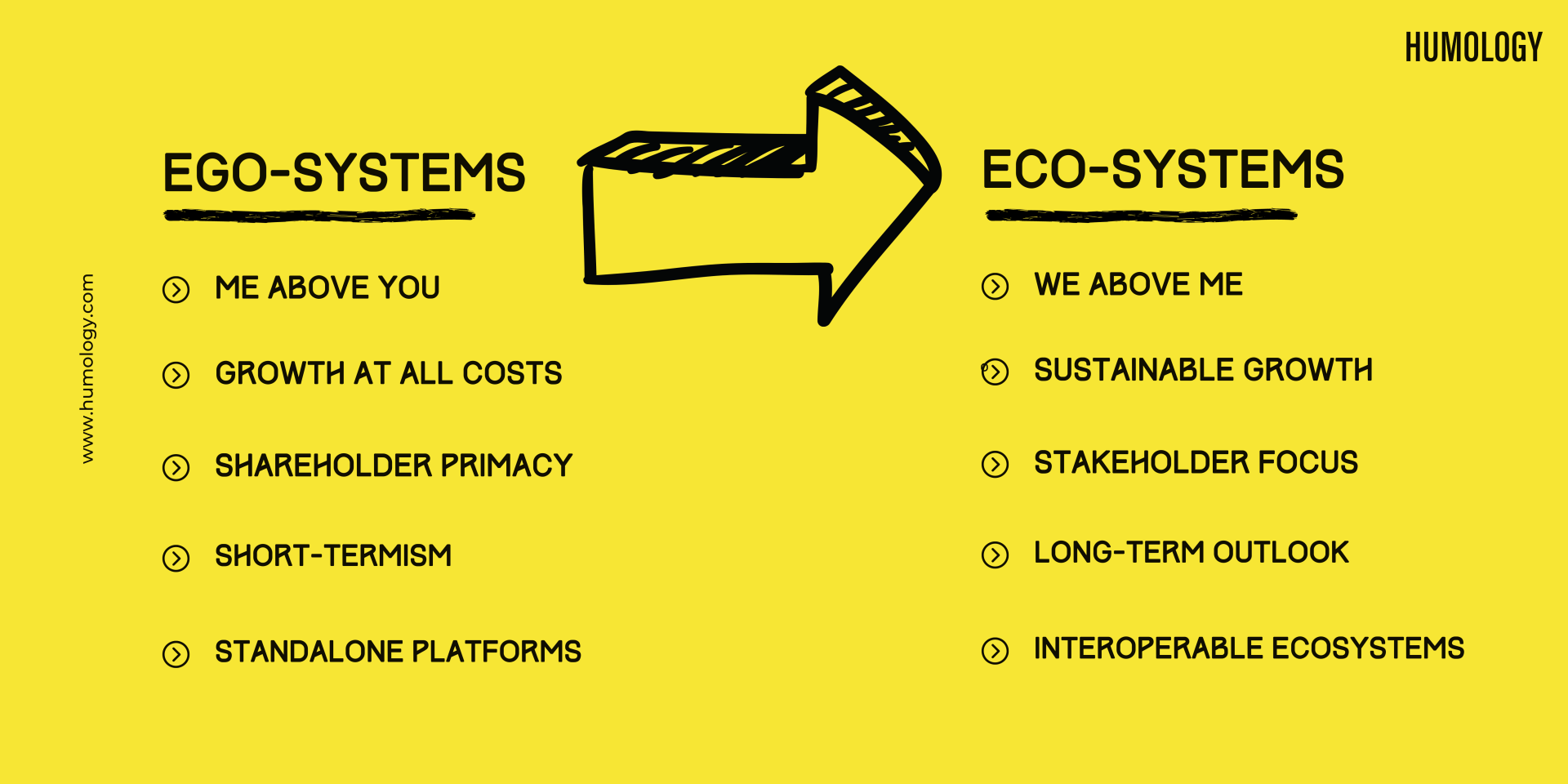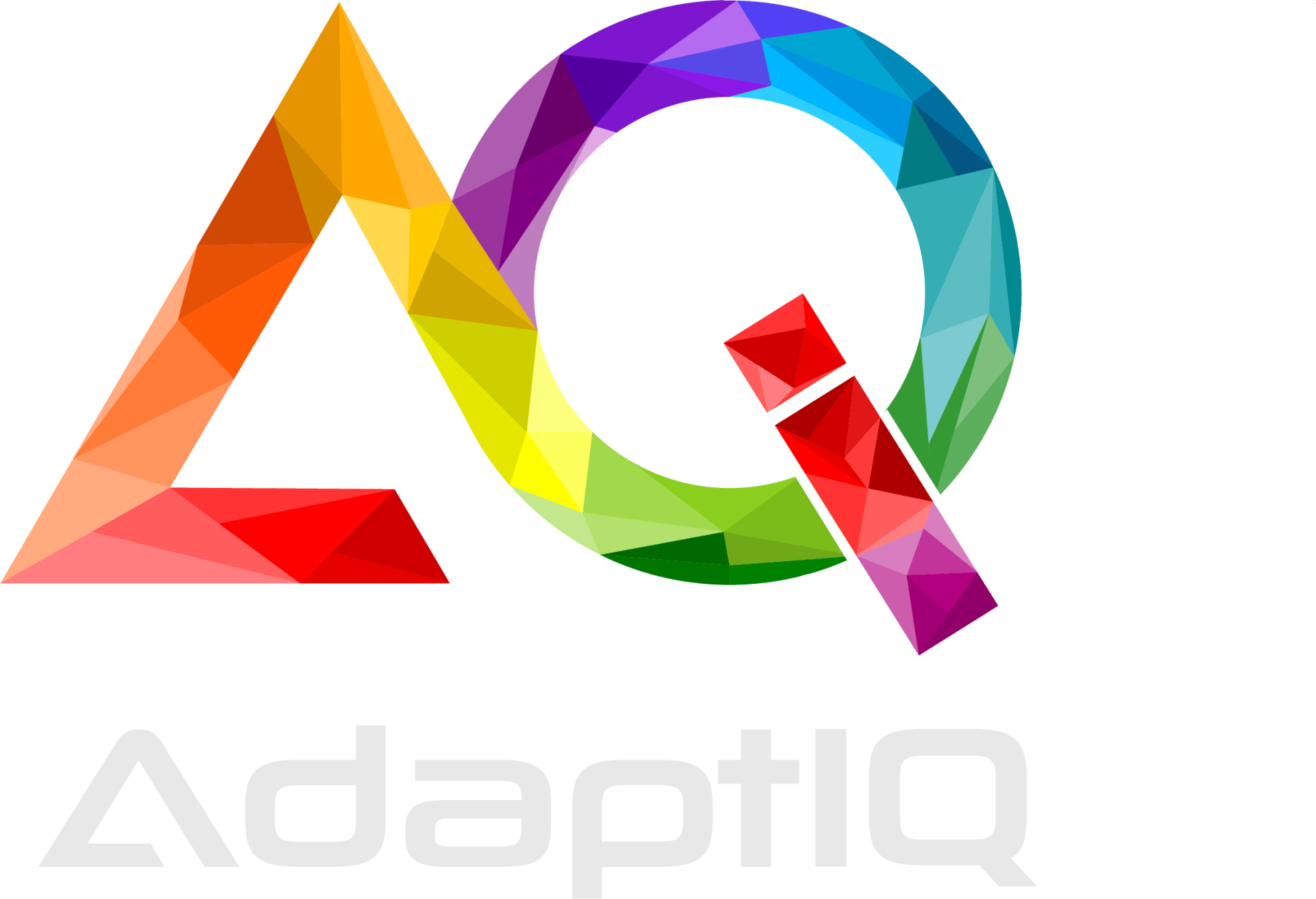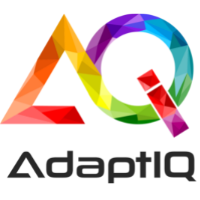
Managing Stakeholders Using the SCARF Neuroscience Model
When you think of stakeholders, what comes to mind? If you answered ‘ HIPPO s’ or ‘ people who love acronyms ’, you wouldn’t be entirely wrong! Stakeholders are usually senior-level people in organisations like function leaders, directors, and the C-Suite. Because they may be time-poor and less accessible, it can be easy to forget that they are people with unique needs and desires. Stakeholders are your customers, regardless who pays for the service, ignore them at your peril . Never underestimate the degree of influence and impact your stakeholders can have on your success!
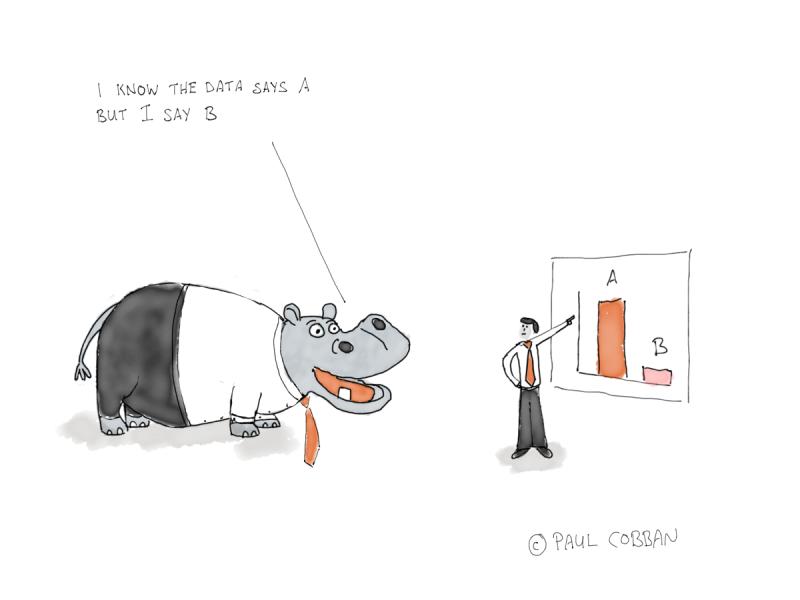
Broadly, we can group stakeholders in three categories: those who are impacted by the initiative, those who can influence or affect the initiative, and those who perceive themselves to be impacted by the initiative. Each group may have the ability to make or break the success of your product. In Humology , we outline how to identify, assess, engage, and manage stakeholders. In this article, we’ll discuss how understanding what makes each stakeholder tick, and identifying their individual needs as well as their commonalities with other stakeholders, are they keys to effective stakeholder engagement. The SCARF model can help you do just that.
Read on to find out more…
“Resistance is thought transformed into feeling. Change the thought that creates the resistance, and there is no more resistance” Robert Conklin
What is the SCARF Model?
Neuroscientist Dr David Rock , co-founder of the Neuroleadership Institute, developed the SCARF model almost 15 years ago. Based in neuroscience research, the model implies that five key social domains activate the same threat and reward responses in our brain that we rely on for physical survival. Based on how we perceive ourselves to be impacted in each domain, we interpret an initiative as either a threat , or a reward . If we feel threatened, we will pull away from the initiative, whereas when we detect a reward we move towards the initiative. Think of these opposing forces like magnets pulling your stakeholders in either direction.
The first initial of each domain makes up the acronym S, C, A, R and F of the model.
- Status: How we see ourselves and how others see us. How do we perceive our relative importance in relation to others.
- Certainty: How confident we are about the future. Can we see the outcome(s) clearly? Do we feel in control of our destiny?
- Autonomy: How much control do have over the situation or outcome(s). Do we agency to make meaningful choices?
- Relatedness: How connected do we feel to others. Do we feel psychologically safe?
- Fairness: How reasonable do we feel we have been treated, or how fair do we perceive the situation to be in general?
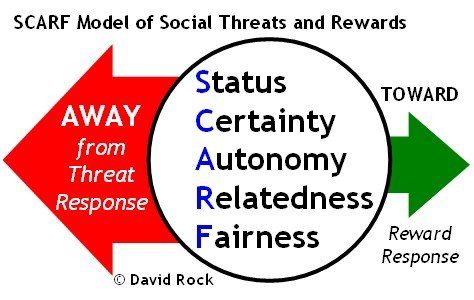
Threat or Reward?
When the brain detects a threat, our sympathetic nervous system is activated, triggering a ‘fight or flight’ response. Cortisol ( the stress hormone ) is released — this hormone increases blood sugar and suppresses the immune system so energy can be redirected to address the perceived threat. When cortisol gets pumping, our creativity and productivity are negatively impacted. We literally can’t think straight and act on instinct.
Adrenaline also kicks in to increase our heart rate, dilate the bronchial passages, and restrict blood vessels — this is to increase oxygen to the lungs and blood flow to muscles to prepare for the fight. When we feel our mouth go dry and our palms become sweaty, our sympathetic nervous system is hard at work! Our reactions can be emotional, instant and often uncontrollable — a twitch, a snide remark, an eye-roll, or a sigh before we’ve had enough time to moderate our behaviour!
Research has shown that a threat response can stimulate the same region of the brain as physical pain. Being left out of a group, or treated differently from our peers might be interpreted as a threat to our status, social standing and relatedness. We are literally hurting!
On the flip side, when we feel accepted, secure, confident and involved, our brains process these feelings as rewards, triggering the release of dopamine ( the happy hormone ).
As we digest a proposed change, we run through a script on our head that determines (or even triggers) our immediate and primal reaction:
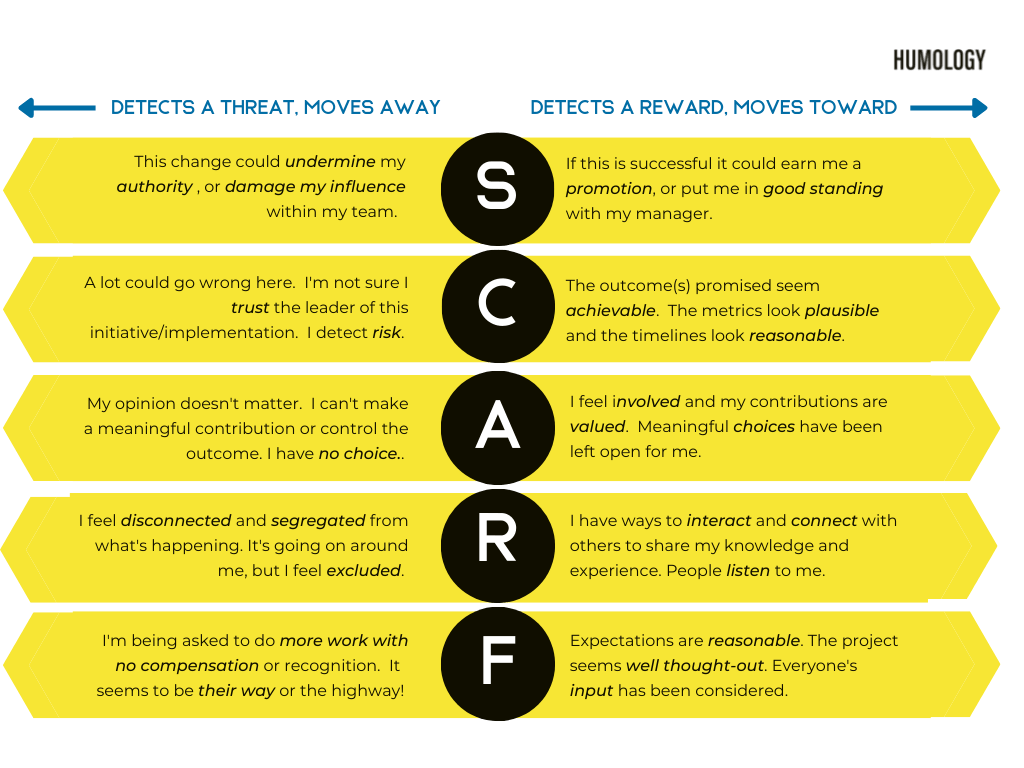
The five domains of SCARF affect us all differently, but almost every stakeholder will have some level of sensitivity to one or more of these factors.
The SCARF model can help you to identify which stakeholders may be sensitive to a particular factor so that you can manage their needs appropriately.
Managing Stakeholder Groups with SCARF
The SCARF Model is a useful tool to help us to reflect on the ways we might unintentionally threaten and undermine important stakeholder relationships, and to think intentionally about how to maximise psychological safety and reward for healthy working relationships. It’s certainly worth becoming familiar with the wide range of potential psychological and social threats that create avoidance behaviors in others. Learn to spot threats early. Become sensitive to them so that you’re less likely to unintentionally create threats that demotivate others and cause unnecessary roadblocks for yourself.
Let’s walk through an example . Our latest product, and AI-enabled automated Applicant Tracking System (ATS), is being implemented at a medium-sized organisation. The identified stakeholder groups might be as follows:
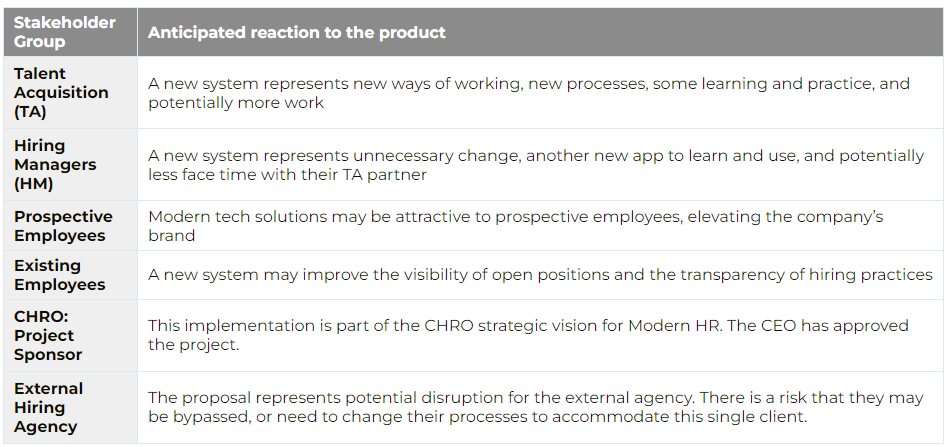
Taking the time to consider and understand how each stakeholder group might react to a new initiative will greatly increase your products chance of success and adoption. Looking at each group individually through the lens of the SCARF model will likely uncover silent objections, attitudes and challenges you hadn’t even considered. Stakeholder management is vital to your core success, as stakeholders who feel safe and supported are more likely to be effective and influential.
For each stakeholder group identified above, capture (or anticipate) their reaction and perspective across each of the five key domains of SCARF. For example, the CHRO’s profile may look like this:

Based on the positive interpretation of the initiative from the perspective of the CHRO, a visual SCARF profile for the CHRO (Project Sponsor) might look like this:
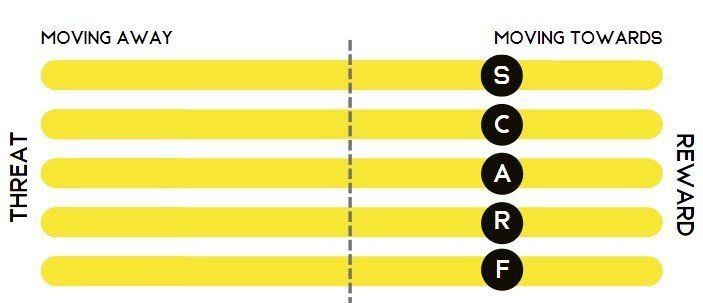
At work, this person will show up as enthusiastic and engaged. In their eyes, they have much to gain and little potential downside.
Now let’s take a look at how another stakeholder group might react to the proposed initiative. How might Hiring Managers feel about using a new system?
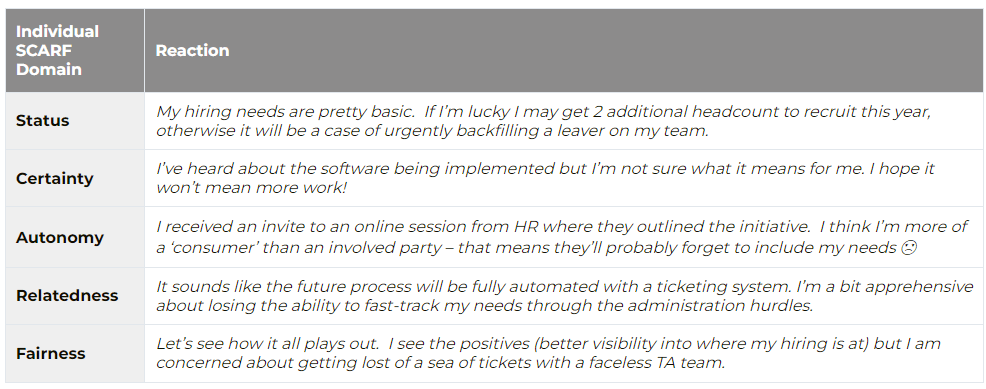
While this stakeholder group may not appear visibly resistant to change, scratching the surface of how they might perceive this proposed initiative shows us that we may need to consider their needs a little more to ensure they are motivated to move towards the change and adopt the product withou resistance.
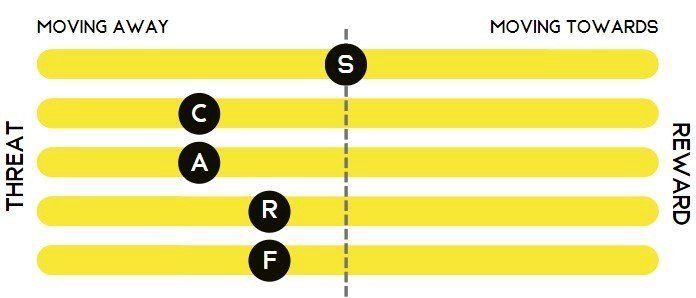
This is where the SCARF model really shines when combined with stakeholder management. At a very early stage you can anticipate, and plan for, concerns and objections from each stakeholder group. If we look at the hiring manager perspective, we can plan to add more clarity to what’s expected of this group. We might decide to involve some early adopters in the process, and plan some training based on their experiences. We could increase the feeling of autonomy by creating a feedback loop, or inviting early questions and concerns. Lastly, it might also be beneficial to reassure hiring managers that the purpose of this initiative is to improve their experience and relationships with their TA partners by removing admin, providing visibility, and freeing up time to add more value to internal customers.
Stakeholder Heat Map
When this exercise is complete for all stakeholder groups, the output provides a comprehensive heatmap of what challenges may lie ahead on this particular initiative. Now that we know the obstacles to avoid, we can begin to address them one by one. We’ve developed a handy SCARF workbook to help you navigate the process with ease — you can access it here
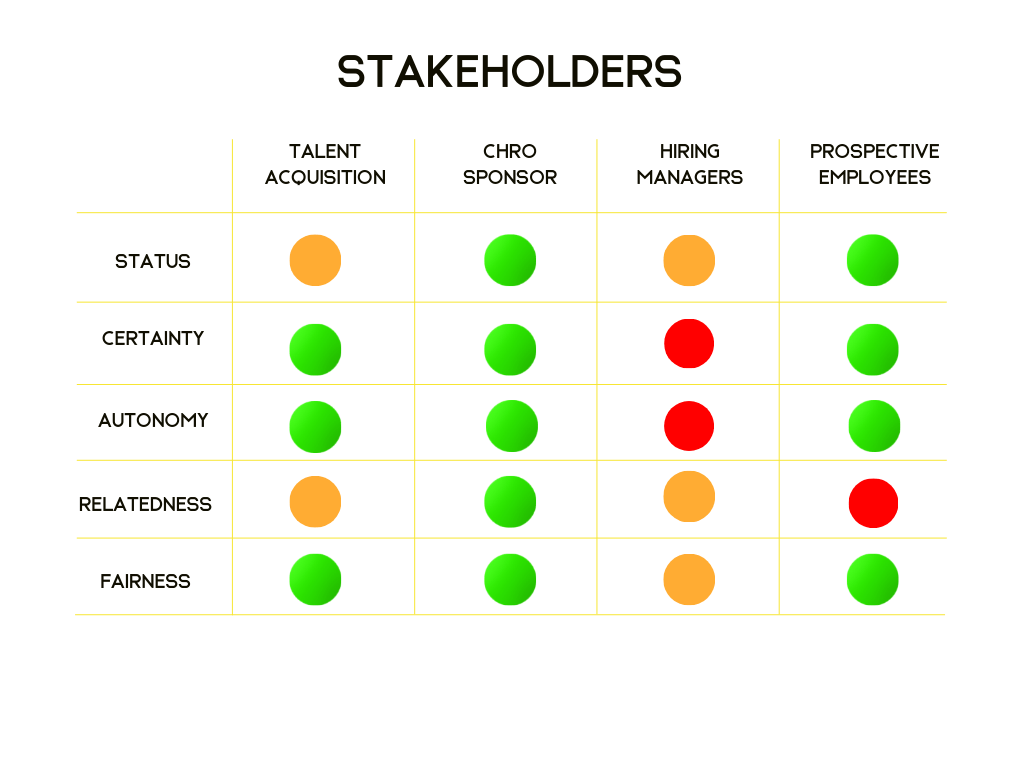
Even a cursory glance at the heatmap highlights potential resistance from the Hiring Manager stakeholder group, as well as some potential dissatisfaction within the Prospective Employee groups. Being aware of potential pitfalls ahead of time means you can adjust course slightly to accomodate and address the individual needs of each stakeholder group.
Summary
The SCARF model is a useful and effective tool for managing stakeholders through change. Whenever you have multiple stakeholders that can influence the success of your product or project, it’s easy to forget that they are individuals with their own needs and desires. Using the SCARF model can help you to better understand what makes each stakeholder tick, and identify their individual needs as well as their commonalities with other stakeholders. When implementing new technologies, the Stakeholder Heatmap can help you turn potential detractors into advocates — removing blockages and noise from sales channels and paving the way for the successful adoption of any technology product.
Joanne Griffin is a researcher and adviser on change and transformation through technology. She is founder of AdaptIQ Solutions , and co-author of Humology — how to put humans back at the heart of technology, available from all bookstores and on Amazon now.



